Turkish ice cream is everywhere—here's how to make it at home
We recreated the world's oldest ice cream in our own kitchen.
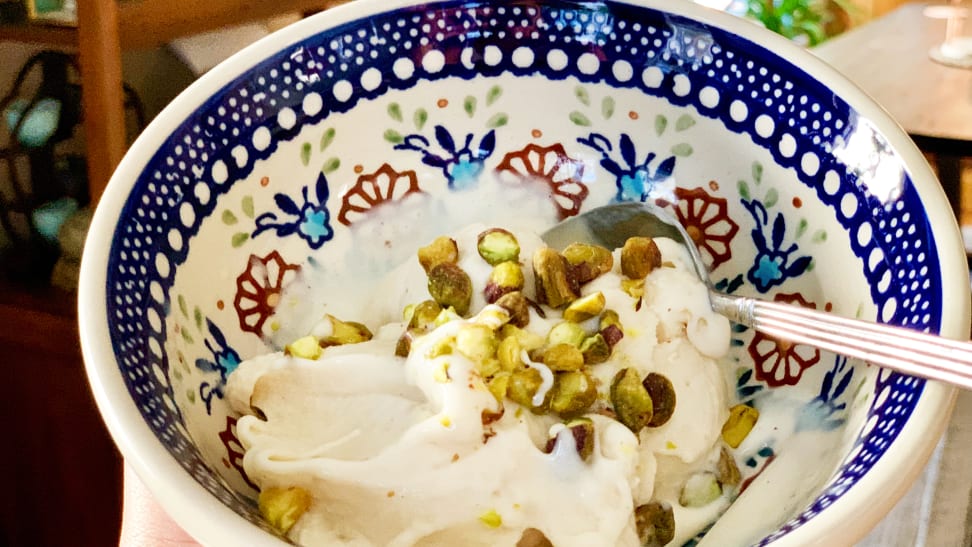 Credit:
Reviewed / Valerie Li
Credit:
Reviewed / Valerie Li
Recommendations are independently chosen by Reviewed's editors. Purchases made through the links below may earn us and our publishing partners a commission.
As you indulge in your final ice cream of this short-lived summer, you should take a moment to thank the ancient Persians for discovering the magic bond between sweetened milk and ice that led to the invention of your favorite treat. There’s one ingredient in that original ice cream, however, that’s probably missing from your bowl—salep, a precious powder from orchid bulbs that has been cultivated in the Eastern Mediterranean for centuries. It gives ice cream a uniquely stretchy texture.
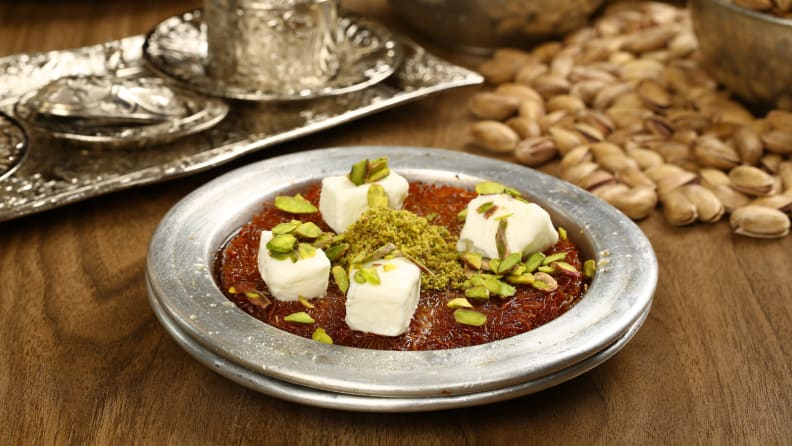
Dondurma was everywhere when I was traveling in Turkey.
A few years ago, I had the chance to sample different variations of salep-based ice cream, which still uses its original recipe and technique, while driving across Turkey. It’s called dondurma in Turkey and booza in Syria, but you will also find it simply called Arabic or Turkish ice cream.
If the names don’t ring a bell, you may recognize the stretchy treat from recent viral videos of it being served, where tourists are ruthlessly pranked by ice cream men dressed in Ottoman clothing. Or you may have caught the Bon Appétit feature on a popular brand of Turkish ice cream sold in stores. It's truly the summer of ancient ice cream.
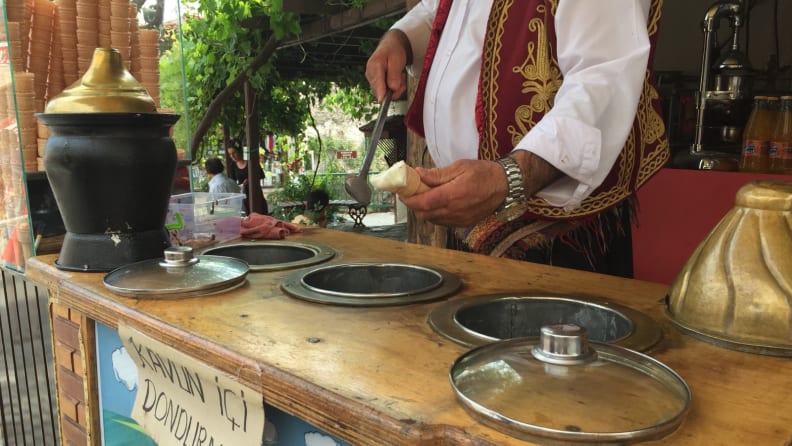
A dondurma vendor in Safranbolu, Turkey.
Upon returning to the States from Turkey, however, I couldn't find real dondurma anywhere. Turkish restaurants rarely had it on the menu, and when they did, it was never quite the authentic ice cream I was accustomed to. Curious about the process and desperate for more, I decided to recreate the ice cream in my own kitchen.
How does dondurma differ from soft serve and sorbet?
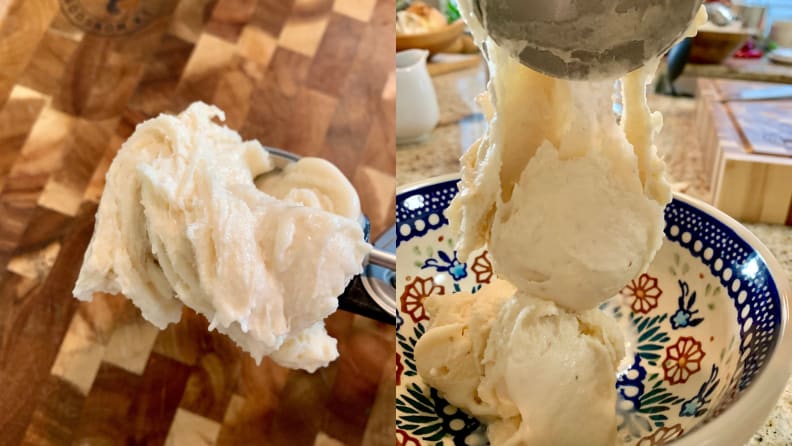
Dondurma/Turkish ice cream gains chewy texture from salep powder.
Dondurma is rather different from other ice creams around the world in terms of consistency and flavor. Dondurma gains its chewy texture from the inclusion of salep, while its light cedar taste comes from mastic resin. Mastic, nicknamed the "tears of Chios," is a brittle and translucent resin obtained from mastic trees that are native to the Greek island of Chios. Its flavor is bitter at first, but after some chewing or grinding, it releases a refreshing piney taste.
Producing dondurma is also a labor of love, as Harold McGee explains in the New York Times. “The dondurma-maker pounds and stretches the ice cream for 20 minutes to organize the network into a dense, elastic mass, just as a breadmaker kneads dough to develop its gluten,” he writes. “Portions of the firm, chewy ice cream are then cut with a knife.”
Where can I find salep and mastic resin?
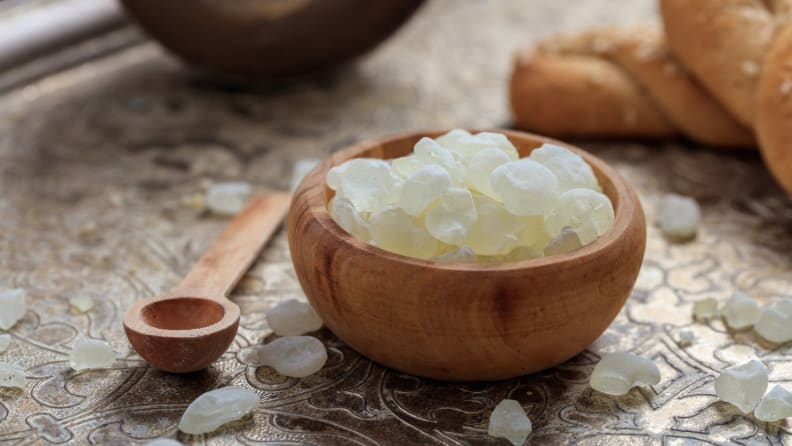
Mastic resin came from trees that are native to Greece.
Due to its limited production, pure salep powder is very rare in the States, even at specialty grocery stores. Most of those stores might sell salep drink mix, but that’s not a good substitute for the actual powder. I ordered both the salep and mastic resin on Amazon, at $20 each, including shipping from Greece. Unfortunately, Turkey currently forbids the export of salep, so Greece is the most reliable source.
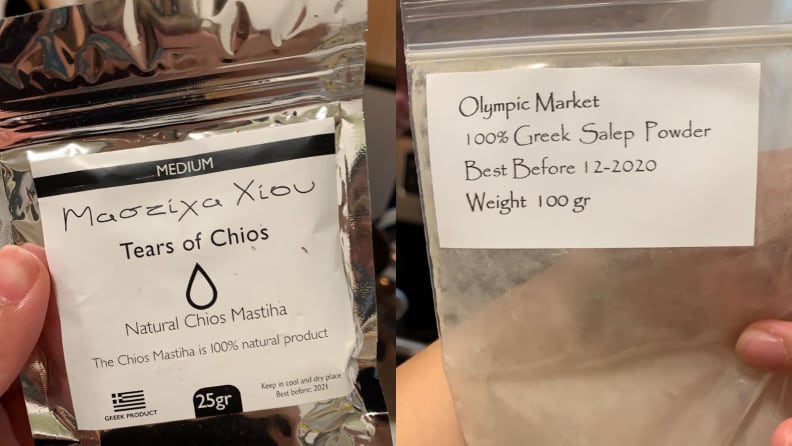
The mastic resin and salep powder I ordered shipped directly from Greece.
As a result of the rarity of the ingredients, some Turkish ice cream makers outside of Turkey substitute salep with corn starch to mimic the thickened texture. You can substitute corn starch at home, but we recommend using salep if possible.
To create my own dondurma at home, I began with a standard recipe and experimented with added ingredients to reach my preferred flavor and texture.
Recipe: Turkish Ice Cream with Pistachio and Rose

This chewy ice cream is easy to make.



